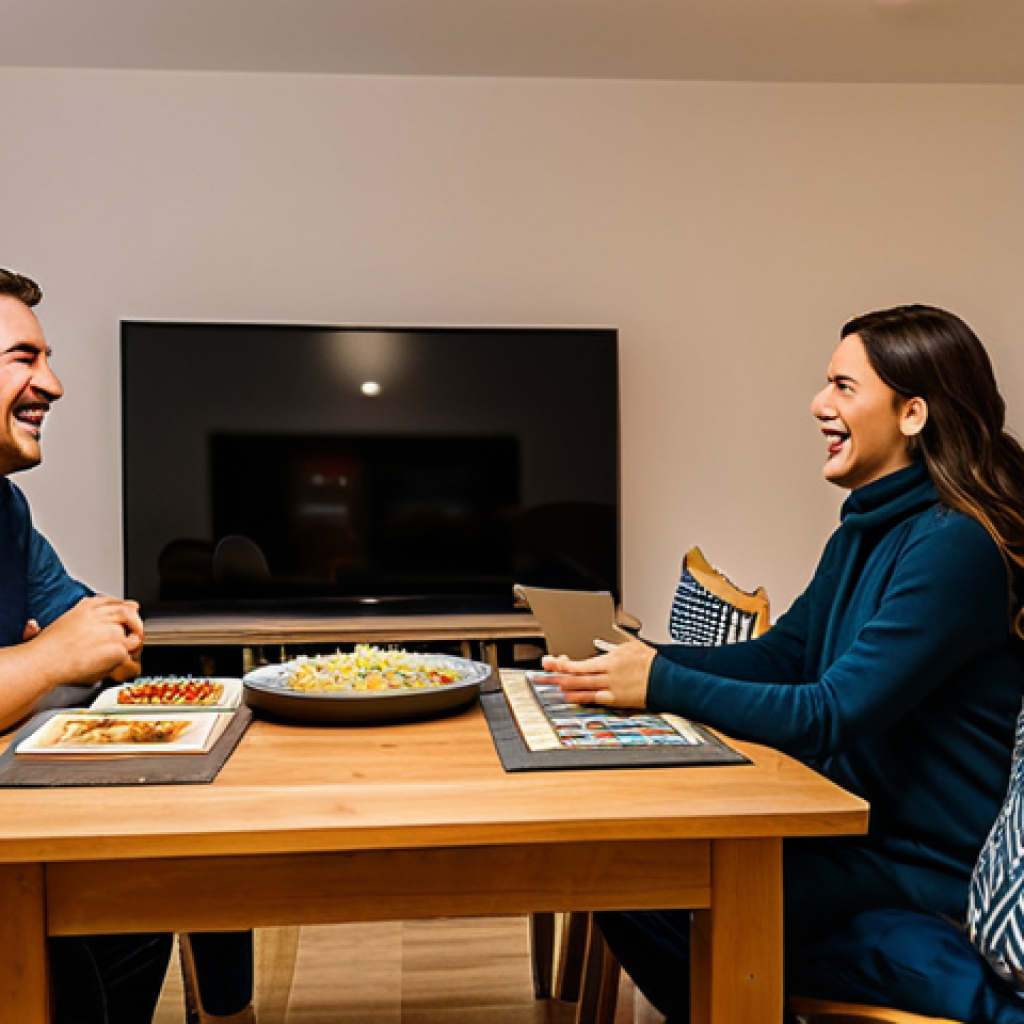Okay, here’s the blog introduction you requested:In our hyper-connected world, it’s easy to get swept away by the constant stream of notifications, emails, and social media updates.
I’ve definitely felt the drain, finding myself scrolling mindlessly for hours, only to feel more stressed and disconnected than before. Lately, I’ve been exploring the idea of a digital detox and carving out dedicated “me time” – a chance to reconnect with myself, my hobbies, and the real world around me.
It’s about consciously choosing to step away from the digital noise and prioritize my well-being. It’s not always easy, but the benefits are proving to be well worth the effort, from improved sleep to reduced anxiety.
Let’s delve deeper and see how we can reclaim our time and attention.
## Reclaiming Your Focus: Simple Strategies for a Mindful Tech BreakIt’s no secret that our devices are designed to be addictive. The constant notifications, the endless scroll, the dopamine hits of likes and comments – it’s a powerful combination that can easily hijack our attention and leave us feeling scattered and overwhelmed.
I remember one particularly hectic week at work. I was glued to my phone, constantly checking emails and responding to messages, even during my lunch break.
I felt perpetually stressed, my sleep suffered, and I couldn’t seem to focus on anything for more than a few minutes. That’s when I realized I needed a change.
I needed to consciously disconnect and reclaim my focus.
Practical Steps to Unplug and Recharge

1. Designate Tech-Free Zones: Start small by creating specific areas in your home where technology is off-limits. For me, it’s the dining table and my bedroom.
No phones during meals allows for genuine connection with family or simply mindful eating. Leaving my phone outside the bedroom has drastically improved my sleep quality.
Trust me, those late-night scrolls are rarely worth the sleep deprivation. It’s about creating physical boundaries to support your mental boundaries. 2.
Schedule Dedicated “Me Time”: Just like you schedule meetings and appointments, schedule time for yourself, free from digital distractions. This could be anything from reading a book in a quiet corner, taking a walk in nature, practicing yoga, or pursuing a hobby you enjoy.
I’ve rediscovered my love for painting, and those hours spent creating art are a true escape from the digital world. No social media posts, no notifications, just pure creative flow.
I also love to go for hikes in the nearby Redwood forest. The smell of the trees, the sound of the birds, it’s incredibly grounding and a great way to clear my head.
3. Mindful Notification Management: Take control of your notifications. Disable non-essential notifications and schedule specific times to check your email and social media.
This prevents constant interruptions and allows you to focus on the task at hand. I’ve found that batching my email checks to just twice a day has significantly reduced my stress levels.
The world won’t end if you don’t respond to every email immediately. 4. Embrace the Power of “Do Not Disturb”: Don’t be afraid to use the “Do Not Disturb” feature on your phone.
Set specific times when you don’t want to be interrupted, whether it’s during work hours, family time, or your evening wind-down routine. Let your friends and family know that you’ll be unavailable during those times, and encourage them to respect your boundaries.
This simple feature can be a game-changer in reclaiming your focus and protecting your mental space. 5. Find Analog Alternatives: Instead of reaching for your phone when you’re bored, explore analog alternatives.
Read a physical book, play a board game, write in a journal, or engage in a hands-on activity. These activities stimulate your mind in different ways and offer a refreshing break from the digital world.
I’ve started keeping a sketchbook and colored pencils on my coffee table, and I often find myself doodling or sketching instead of mindlessly scrolling through social media.
6. Utilize Website Blockers: The internet is a rabbit hole, and it’s easy to get lost in distractions. Website blockers can help you stay focused by temporarily blocking access to distracting websites like social media platforms or news sites.
There are many free and paid options available, so find one that works for you.
The Unexpected Benefits of Stepping Away from the Screen
Taking a break from technology isn’t just about reducing stress and improving focus. It can also have a profound impact on your creativity, relationships, and overall well-being.
It’s funny, I used to think that I needed to be constantly connected to stay informed and productive. But the truth is, disconnecting actually made me more creative and efficient.
Increased Creativity and Innovation
* Allowing Your Mind to Wander: Stepping away from the constant stream of information allows your mind to wander, make connections, and generate new ideas.
Boredom can be a powerful catalyst for creativity. I find that my best ideas often come to me when I’m not actively trying to think of them, like when I’m taking a walk or doing a mindless chore.
* Boosting Inspiration: By disconnecting from the digital world, you open yourself up to new experiences and perspectives that can spark inspiration.
Spend time in nature, visit a museum, or engage in a conversation with someone new. * Overcoming Creative Blocks: If you’re feeling stuck on a project, taking a digital break can help you clear your head and approach the problem with fresh eyes.
I often find that a short walk or a few minutes of meditation can help me break through creative blocks.
Strengthened Relationships
* Present and Engaged: When you’re not distracted by your phone, you’re able to be more present and engaged in conversations with your loved ones. You can truly listen and connect on a deeper level.
* Improved Communication: Taking a digital break can help you improve your communication skills. You’ll be forced to rely on verbal and nonverbal cues instead of relying on text messages and emojis.
* Quality Time: Designating tech-free time for family activities, such as game nights or movie nights, can strengthen your bonds and create lasting memories.
My family has a tradition of playing board games every Sunday night, and it’s one of my favorite times of the week.
Enhanced Overall Well-being
* Reduced Stress and Anxiety: Constant connectivity can lead to increased stress and anxiety. Taking a break from technology allows you to relax, de-stress, and recharge.
* Improved Sleep: The blue light emitted from our devices can interfere with our sleep patterns. Avoiding screens before bed can help you fall asleep faster and sleep more soundly.
* Increased Self-Awareness: Disconnecting from the digital world gives you the opportunity to connect with yourself and reflect on your thoughts, feelings, and values.
Finding the Right Balance: It’s Not About Quitting Tech, But Using It Wisely
The goal isn’t to completely eliminate technology from your life, but rather to use it mindfully and intentionally. It’s about finding a healthy balance that allows you to enjoy the benefits of technology without sacrificing your well-being.
The “Digital Minimalism” Approach
* Identifying Your Values: Start by identifying your core values and what truly matters to you. This will help you determine which technologies align with your values and which ones are simply distractions.
* A Month-Long Challenge: Take a month-long break from all optional technologies. During this time, focus on engaging in activities that support your values and well-being.
* Reintroducing Technology Intentionally: After the month-long break, carefully reintroduce technology back into your life, one tool at a time. Ask yourself how each technology will serve you and whether it aligns with your values.
Practical Tips for Mindful Tech Use
* Setting Time Limits: Use apps or features on your devices to set time limits for specific apps or websites. This can help you prevent mindless scrolling and stay focused on your priorities.
* Creating “Tech-Free” Hours: Designate specific hours of the day when you don’t use any technology. This could be during your commute, during meals, or before bed.
* Regularly Evaluating Your Tech Use: Take time each week or month to evaluate how you’re using technology and whether it’s serving you well. Adjust your habits as needed to ensure that technology is supporting your goals and values.
Creating a Tech-Life Balance
| Strategy | Description | Benefits |
| :————————— | :————————————————————————————————————————————————————————————————— | :————————————————————————————————————————————————- |
| Tech-Free Zones | Designate specific areas in your home where technology is off-limits.
| Promotes relaxation, improves sleep quality, encourages face-to-face interactions. |
| Scheduled “Me Time” | Schedule time for yourself, free from digital distractions, to pursue hobbies, relax, or engage in mindful activities.
| Reduces stress, boosts creativity, increases self-awareness. |
| Mindful Notification Management | Disable non-essential notifications and schedule specific times to check email and social media.
| Prevents constant interruptions, improves focus, reduces anxiety. |
| “Do Not Disturb” Mode | Utilize the “Do Not Disturb” feature on your phone during work hours, family time, or your evening wind-down routine.
| Protects mental space, improves focus, allows for uninterrupted time. |
| Analog Alternatives | Explore analog alternatives to technology, such as reading a physical book, playing a board game, or writing in a journal.
| Stimulates the mind in different ways, offers a refreshing break from the digital world. |
| Website Blockers | Use website blockers to temporarily block access to distracting websites, such as social media platforms or news sites.
| Helps you stay focused, prevents mindless scrolling, improves productivity. |
| Digital Minimalism | Identify your core values, take a month-long break from optional technologies, and reintroduce technology intentionally.
| Helps you determine which technologies align with your values, reduces clutter, promotes mindful tech use. |
| Time Limits | Use apps or features on your devices to set time limits for specific apps or websites.
| Prevents mindless scrolling, helps you stay focused on your priorities, encourages self-control. |
| “Tech-Free” Hours | Designate specific hours of the day when you don’t use any technology.
| Provides a break from constant stimulation, encourages relaxation, improves sleep quality. |
| Regular Evaluation | Take time each week or month to evaluate how you’re using technology and whether it’s serving you well.
| Allows you to adjust your habits as needed, ensures that technology is supporting your goals and values, promotes ongoing self-reflection. |
Embracing the Journey: Small Steps Lead to Big Changes
It’s important to remember that reclaiming your focus is a journey, not a destination. There will be times when you slip up and find yourself mindlessly scrolling through social media, and that’s okay.
The key is to be patient with yourself, learn from your mistakes, and keep moving forward.
Start with Small, Manageable Changes
* Focus on One Thing at a Time: Don’t try to overhaul your entire tech routine overnight. Start with one small change, such as designating a tech-free zone or scheduling a few minutes of “me time” each day.
* Celebrate Your Progress: Acknowledge and celebrate your successes, no matter how small. This will help you stay motivated and build momentum. * Be Kind to Yourself: Don’t beat yourself up if you slip up.
Just acknowledge it, learn from it, and get back on track.
The Long-Term Rewards
* Increased Productivity: By reducing distractions and improving focus, you’ll be able to accomplish more in less time. * Improved Mental Health: Taking a break from technology can reduce stress, anxiety, and depression.
* More Meaningful Connections: By being more present and engaged in your relationships, you’ll be able to build stronger, more meaningful connections with the people you care about.
Ultimately, reclaiming your focus is about taking control of your attention and creating a life that is more aligned with your values and priorities. It’s about consciously choosing how you spend your time and energy, and making sure that technology is serving you, not the other way around.
Reclaiming your focus in our hyper-connected world is a journey worth undertaking. It’s about carving out moments of peace and presence in a world that constantly demands our attention.
It’s about making conscious choices that prioritize our well-being over the allure of the digital. So, let’s take that first step, shall we? Let’s reclaim our focus, one mindful tech break at a time.
In Conclusion
Ultimately, finding a healthy tech-life balance is a personal journey. It’s about discovering what works best for you and making adjustments along the way. Embrace the process, be patient with yourself, and celebrate the small victories. The rewards – increased productivity, improved mental health, and more meaningful connections – are well worth the effort.
Helpful Tips
1. Explore apps designed to limit screen time. Many are available for both iOS and Android, allowing you to set daily limits for specific apps or categories.
2. Consider a digital detox retreat. These retreats offer a complete break from technology in a supportive environment, helping you reconnect with yourself and nature.
3. Find a tech accountability partner. Share your goals with a friend or family member and check in with each other regularly to stay on track.
4. Invest in hobbies that don’t involve screens. Woodworking, gardening, playing a musical instrument, or learning a new language can provide a fulfilling alternative to digital entertainment.
5. Remember the 20-20-20 rule. Every 20 minutes, look at something 20 feet away for 20 seconds to reduce eye strain from prolonged screen time.
Key Takeaways
• Designate tech-free zones in your home to promote relaxation and better sleep.
• Schedule dedicated “me time” to pursue hobbies and reduce stress.
• Manage notifications mindfully to prevent constant interruptions.
• Embrace analog alternatives like reading books or writing in a journal.
• Find a digital balance that supports your well-being and values.
Frequently Asked Questions (FAQ) 📖
Q: I’m terrible at this. I can barely go an hour without checking my phone.
A: ny tips for a total newbie? A1: Trust me, you’re not alone! It’s tough at first, but small steps are key.
Start with designated “phone-free” zones, like your bedroom or during meals. Try silencing notifications for non-essential apps – you’d be surprised how much less you feel the urge to check.
Also, find a non-digital activity you enjoy, like reading, hiking, or even just a relaxing bath. The goal is to replace the urge with something positive.
And don’t beat yourself up if you slip up! Just start fresh the next day.
Q: Isn’t a digital detox just for tech-obsessed millennials? I’m not on social media that much.
A: Not at all! While it’s true that constant social media use can be draining, a digital detox is about more than just quitting Instagram. It’s about consciously disconnecting from all forms of digital stimulation – emails, news alerts, even streaming services.
Even if you’re not glued to your phone, the constant influx of information can still impact your stress levels and ability to focus. Think of it as a mental reset, regardless of your age or tech habits.
I know my aunt, who’s in her 60s and barely uses Facebook, found it super helpful for improving her sleep!
Q: Okay, this sounds good in theory, but what about work? I have to be available by email.
A: That’s a valid concern! A complete digital blackout isn’t realistic for most of us. The key is to find a balance that works for you.
Instead of trying to cut off all digital access, consider setting specific “email hours” and turning off notifications outside of those times. Use an auto-responder to let people know you’re not checking constantly.
Maybe even discuss boundaries with your boss – you might be surprised at how understanding they are. The goal is to be intentional about your technology use, rather than being controlled by it.
📚 References
Wikipedia Encyclopedia






